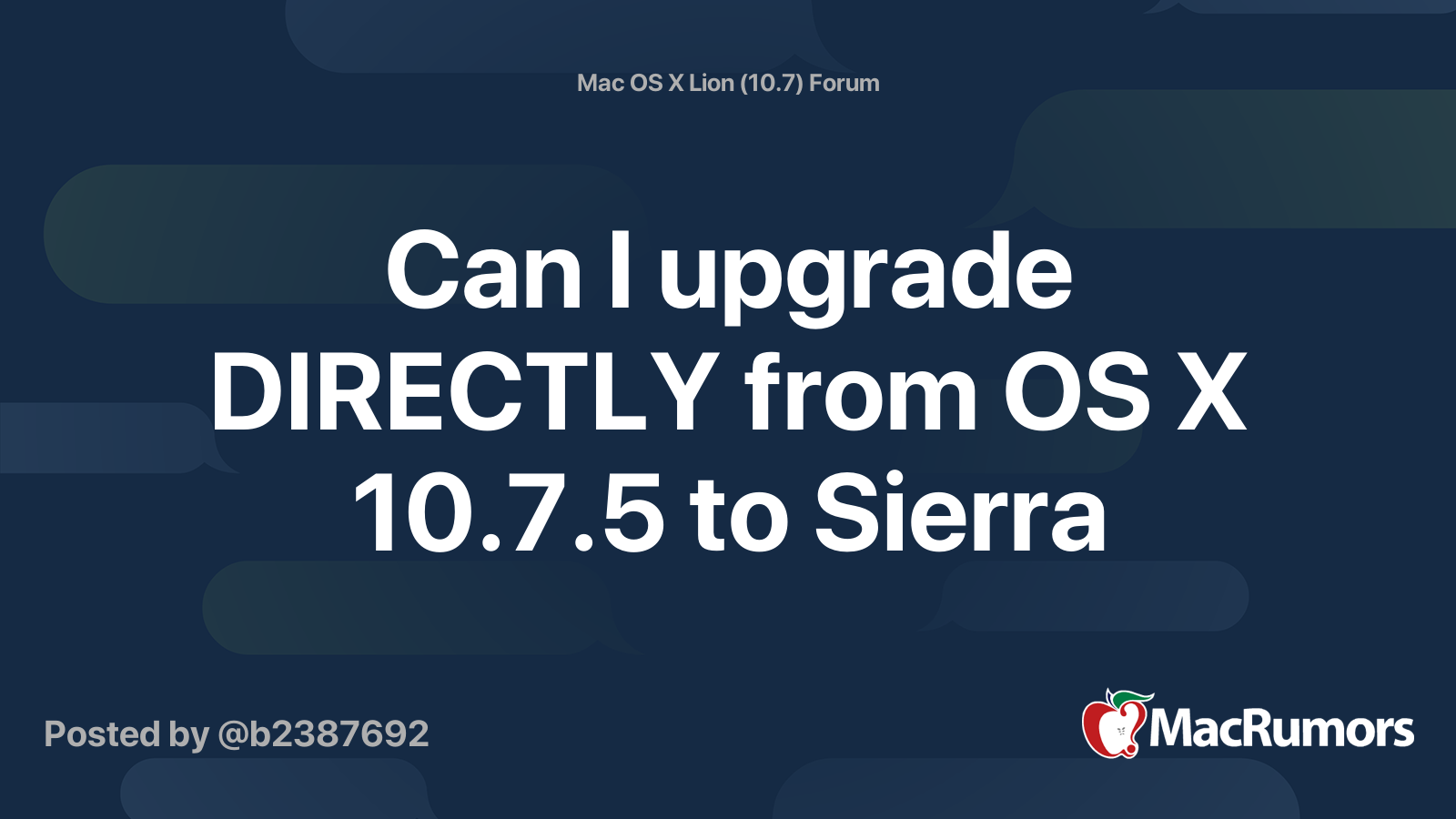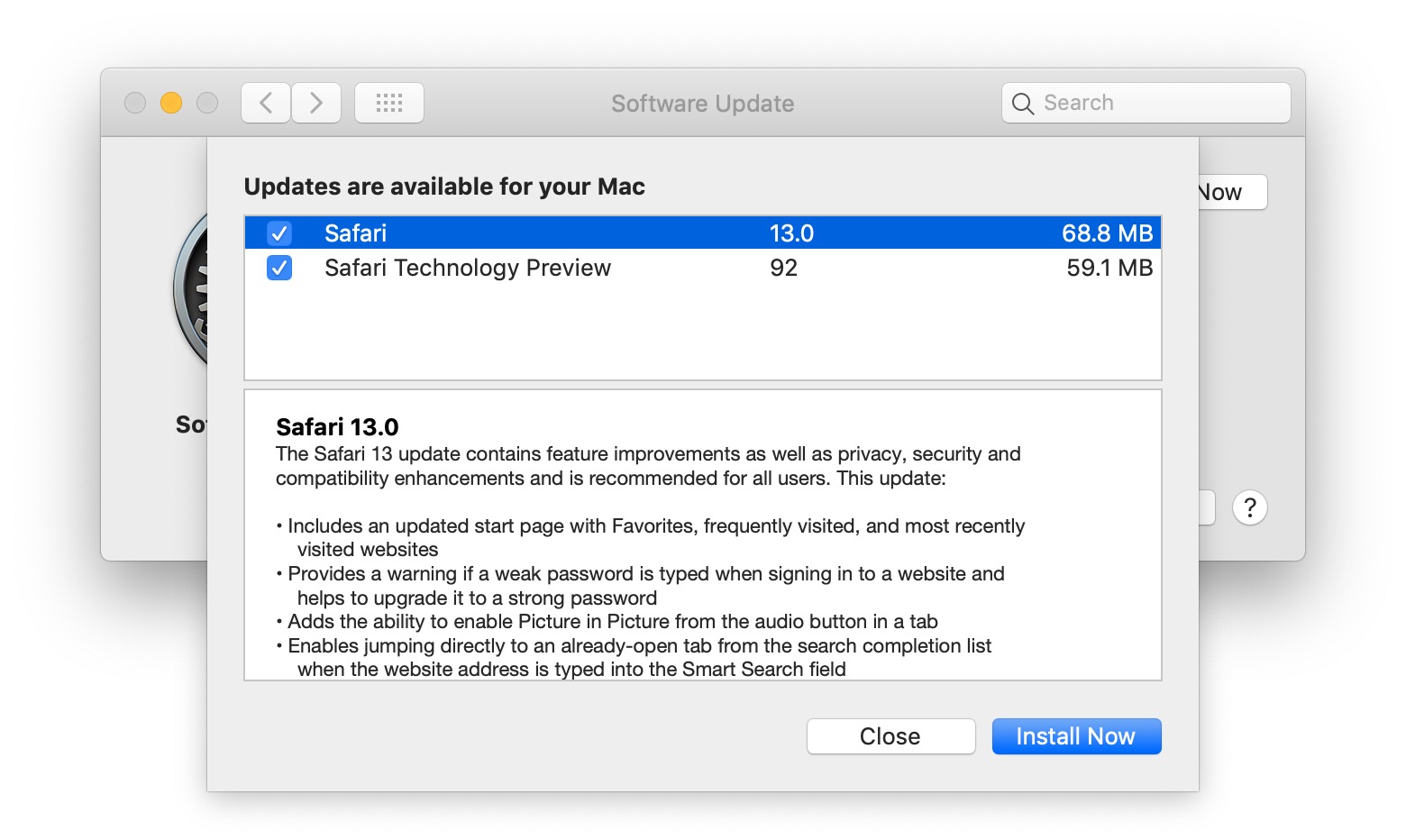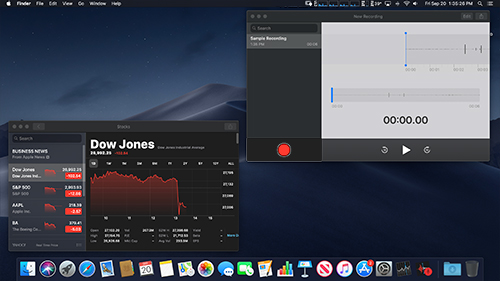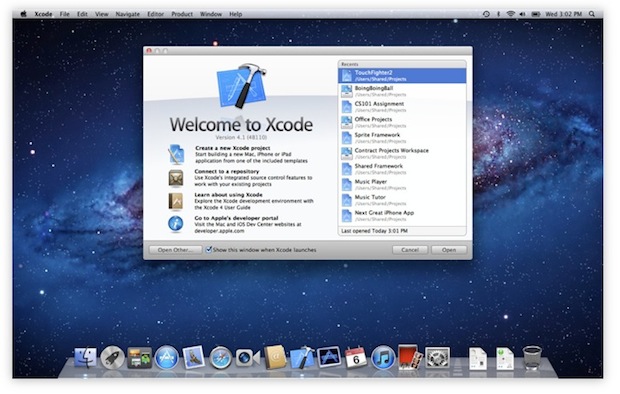- If you want to upgrade to this version, it is possible as long as your current operating system version is lower than macOS High Sierra. Natively, look for “Disk Utility” in your application, select an external USB device with a capacity of 8 GB or larger, format it directly, and remember to choose the format “Mac OS Extended (Journaled)”.
- If your Mac is using an earlier version of any Mac operating system, you should install the latest Apple software updates, which can include important security updates and updates for the apps that are installed by macOS, such as Safari, Books, Messages, Mail, Music, Calendar, and Photos.
To get the latest features and maintain the security, stability, compatibility, and performance of your Mac, it's important to keep your software up to date. Apple recommends that you always use the latest macOS that is compatible with your Mac.
Learn how to upgrade to macOS Big Sur, the latest version of macOS.
MacOS High Sierra is a seasoned, robust, and straightforward-to-use operating system developed for your MacBook. With this OS, some of the novel features have been added for the desktop users. MacOS High Sierra might not offer diverse underlying differences to the user experience, but there are enough quality changes and they would certainly boost the performance of your Mac. MacOS Big Sur elevates the most advanced desktop operating system in the world to a new level of power and beauty. Experience Mac to the fullest with a refined new design. Enjoy the biggest Safari update ever. Discover new features for Maps and Messages. And get even more transparency around your privacy.
Check compatibility
If a macOS installer can't be used on your Mac, the installer will let you know. For example, it might say that it's too old to be opened on this version of macOS, or that your Mac doesn't have enough free storage space for the installation.
To confirm compatibility before downloading, check the minimum requirements for macOS Catalina, Mojave, High Sierra, Sierra, El Capitan, or Yosemite. You can also find compatibility information on the product-ID page for MacBook Pro, MacBook Air, MacBook, iMac, Mac mini, or Mac Pro.
Make a backup
Before installing, it’s a good idea to back up your Mac. Time Machine makes it simple, and other backup methods are also available. Learn how to back up your Mac.
Download macOS
It takes time to download and install macOS, so make sure that you're plugged into AC power and have a reliable internet connection.
Safari uses these links to find the old installers in the App Store. After downloading from the App Store, the installer opens automatically.
- macOS Catalina 10.15 can upgrade Mojave, High Sierra, Sierra, El Capitan, Yosemite, Mavericks
- macOS Mojave 10.14 can upgrade High Sierra, Sierra, El Capitan, Yosemite, Mavericks, Mountain Lion
- macOS High Sierra 10.13 can upgrade Sierra, El Capitan, Yosemite, Mavericks, Mountain Lion
Safari downloads the following older installers as a disk image named InstallOS.dmg or InstallMacOSX.dmg. Open the disk image, then open the .pkg installer inside the disk image. It installs an app named Install [Version Name]. Open that app from your Applications folder to begin installing the operating system.
- macOS Sierra 10.12 can upgrade El Capitan, Yosemite, Mavericks, Mountain Lion, or Lion
- OS X El Capitan 10.11 can upgrade Yosemite, Mavericks, Mountain Lion, Lion, or Snow Leopard
- OS X Yosemite 10.10can upgrade Mavericks, Mountain Lion, Lion, or Snow Leopard
Install macOS
Follow the onscreen instructions in the installer. It might be easiest to begin installation in the evening so that it can complete overnight, if needed.
If the installer asks for permission to install a helper tool, enter the administrator name and password that you use to log in to your Mac, then click Add Helper.
Please allow installation to complete without putting your Mac to sleep or closing its lid. Your Mac might restart, show a progress bar, or show a blank screen several times as it installs macOS and related firmware updates.
Learn more
You might also be able to use macOS Recovery to reinstall the macOS you're using now, upgrade to the latest compatible macOS, or install the macOS that came with your Mac.
24 Apr How to Upgrade Mac to macOS High Sierra
April 24, 2018
The latest version of the macOS operating system, macOS High Sierra, was released on Monday, September 25, 2017.
In this article, we will explain how to upgrade mac to macOS High Sierra.
Why Should We Upgrade to macOS High Sierra?
Apple released the latest macOS, High Sierra, and added some new features including a new and improved Apple File System (AFPS), a faster browser, stellar graphics, better gaming capabilities and VR support. MacOS 10.13 is absolutely worthwhile to upgrade your Mac.
macOS High Sierra System Compatibility
You can download and install macOS High Sierra OS for free in 2009 or later. Basically, if your Mac is currently running macOS Sierra system (macOS 10.12), you can smoothly upgrade to macOS High Sierra.
The following is the device compatibility information released by Apple:
- iMac (Late 2009 or newer)
- MacBook Air (Late 2010 or newer)
- MacBook (Late 2009 or newer)
- Mac mini (Mid 2010 or newer)
- MacBook Pro (Mid 2010 or newer)
- Mac Pro (Mid 2010 or newer)
Some features, such as High Efficiency Video Coding (HEVC) encoding and decoding require newer processors and devices, some of which unfortunately cannot run on older devices.
If you are running OS X Lion (10.7.5) or later, you can upgrade directly to macOS High Sierra.
How to Upgrade macOS
There are two ways to upgrade macOS: directly in Mac App Store, or upgrade using an USB device.
No matter which way you choose, always remember to back up your data before performing an upgrade.
Time Machine Backup

Apple has its own official backup tool: Time Machine. This feature was released in OS X 10.5 Leopard. If you have never backed up, let me tell you how important it is.
Time Machine can connect to your Mac and any external hard drive via USB, FireWire or Thunderbolt port. Back up everything on your Mac directly to your hard drive, in case the Mac cannot upgrade properly.
It also supports Apple’s Time Capsule and backup disks connected over a network as long as the disks support AFPS. As long as the disk is available to your Mac, you can use it for Time Machine backups.
When enabled, Apple’s Time Machine will periodically transfer all files and store data on an inserted external hard drive or on a Time Capsule connected to the network.
You can choose hourly, daily or weekly backup to store your data on the external hard drive. When the external device is full, Time Machine will delete the oldest backup and replace it with the newer version.
Let’s check how to enable Time Machine backup on Mac devices.
1. Choose “System Preferences…” from the Mac menu.
2. Double-click the Time Machine icon.
3. Click “Select Backup Disk…” to select the disk you want to use as a Time Machine backup.
4. Select the “Back Up Automatically” check box so that your Mac will automatically back up data to your chosen disk.
If you want to restore files from Time Machine, make sure your Mac is running. Click “Enter Time Machine”, find the previous file or folder, and then click “Restore.”
Besides Time Machine, you can try other great backup and restore software such as Carbon Copy Cloner (CCC) and SuperDuper.
1. Direct Upgrade in Mac App Store
Generally, you can upgrade your system directly in the Mac App Store by clicking “Check for Updates” or click the following link to download macOS High Sierra:
https://itunes.apple.com/app/macos-high-sierra/id1246284741?l=en&mt=12
If you use a Beta version, you still need to click the link above to download the system, or go to the developer’s website for download information.
If you want to choose “USB clean upgrade”, check the detailed information below.

2. Upgrade using USB device
i. USB Preparation
Before formatting your current operating system, download macOS High Sierra from the Mac App Store first. You will need a copy of macOS High Sierra to perform a clean installation later. If you want to upgrade to this version, it is possible as long as your current operating system version is lower than macOS High Sierra.
Natively, look for “Disk Utility” in your application, select an external USB device with a capacity of 8 GB or larger, format it directly, and remember to choose the format “Mac OS Extended (Journaled)”. If it is a hard disk, it would be better to make a partition beforehand.
If you have already downloaded the macOS High Sierra package, do not click on the installation. Directly open the “terminal” program, which you can find in the application.
When typing the following text in the terminal, check the name of the formatted external USB device. If you do not name it “Untitled”, you need to change the command syntax of the path name: Volumes/Untitled. The names of external USB devices cannot contain spaces and are case sensitive.
sudo /Applications/Install macOS High Sierra.app/Contents/Resources/createinstallmedia –volume /Volumes/Untitled –applicationpath /Applications/Install macOS High Sierra.app –nointeraction
Press “Enter” on your keyboard to execute the command. You will then be prompted to enter the administrator password. It will start the process after the operation, which can take a long time, depending on the transfer speed of the external USB device. When done, the terminal window will report “Done.”

ii. USB Upgrade Installation
a. Click the Apple icon .
b. Choose “Restart…” from the drop-down menu.
c. Press and hold “Command+R” when you hear a startup ring (or when the screen on your newer Mac device turns black), and hold down the keys until your computer restarts.

d. Open “Disk Utility”, choose your startup disk, and then click “Erase”.
e. Select “Mac OS Extended (Journaled)” from the list of volume formats and start formatting.
f. When it returns to the former page, insert your USB and click “Continue”.
g. When the installation window appears, click “Continue” again.
Free app to open zip files on mac. h. Agree to the software terms and conditions. Choose your hard drive.
i. Click “Install” and wait until the upgrade is done
How to Keep Your Mac Always Clean
If you have done a complete installation of macOS, you must be enjoying the completely new macOS now. I believe you also want to keep your Mac clean. Let’s say someday your Mac has a lot of junk files and duplicate photos. There are also probably many apps you have never used and don’t need them anymore. I must tell you there is a savior for your Mac! Its name is Cleaner One. It’s really great to have such a system optimizing tool. With its “Junk Files” feature, it not only cleans temporary files including logs, mail caches, iTunes and iOS temporary files, and empties trash for the current user, but also detects remaining files after deleting apps.
It also has a function called “Duplicate Files”, which can find duplicate files on your Mac through fast and accurate scanning techniques covering your entire home folder. Duplicates are selected not only by the file name but also by their contents. Files are shown in detailed previews. It can further help you decide which copy to delete by presenting the “Auto Select” button.
Duplicates can be sorted by file type and listed in their full route for you to track. You can decide which way to clean these files; either by sending them to trash or deleting them permanently.
Upgrade Os X Lion 10.7.5 To High Sierra
You probably also need an intelligent app uninstaller. Don’t worry, Cleaner One has this function. It can auto-clean leftovers of deleted apps and manage all the applications installed on your Mac easily. When you remove an app you don’t need anymore, it can get rid of all the associated files of the uninstalled app as well. It will also notify you of new updates to installed apps.


